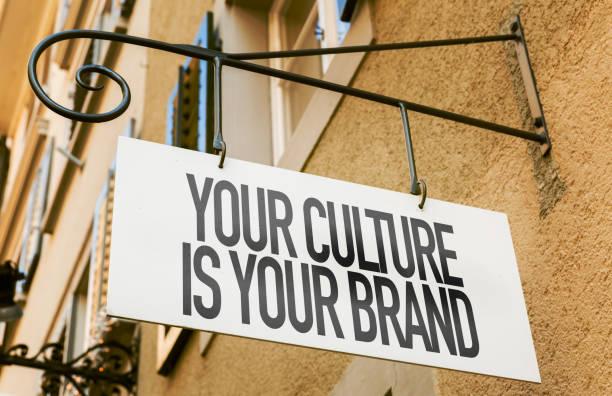YOUR CULTURE IS YOUR BRAND-How does language shape cultural identity and perception? By Hugo Keji

Language plays a critical role in shaping cultural identity and perception. It acts as a vehicle for expressing cultural values, traditions, and social norms, while also influencing how individuals perceive the world around them. Here's how language impacts both cultural identity and perception:
1. Language as a Marker of Cultural Identity
- Connection to Heritage: Language is often tied to a group’s history and traditions. For many cultures, preserving a native language is synonymous with preserving cultural heritage. For instance, indigenous languages are often seen as key to maintaining cultural practices and community bonds.
- Group Identity: Speaking a particular language can reinforce a sense of belonging to a specific community or ethnic group. This shared language fosters a collective identity, distinguishing one group from others. For example, the use of Irish Gaelic is a strong symbol of Irish identity.
- Cultural Continuity: Language is a tool for passing down cultural knowledge, stories, and traditions from one generation to the next. It ensures that cultural identity remains intact over time.
2. Language and Perception of Reality
- Linguistic Relativity: This concept, often referred to as the Sapir-Whorf hypothesis, suggests that the structure and vocabulary of a language influence how its speakers perceive and think about the world. For instance, languages that have multiple words for different types of snow (like Inuktitut) enable speakers to perceive and describe snow in ways that others cannot.
- Cultural Lens: Language provides a framework through which cultural values and beliefs are understood. For example, the way different cultures talk about time—some viewing it linearly and others cyclically—shapes how individuals from those cultures perceive the passage of time and prioritize their lives.
- Shaping Worldview: The vocabulary and metaphors available in a language can shape how its speakers conceptualize abstract concepts such as love, freedom, or justice. These cultural concepts are embedded in language, influencing how people think about and interact with the world.
AfriPrime App link: FREE to download...
https://www.amazon.com/Africircle-AfriPrime/dp/B0D2M3F2JT
3. Language and Social Identity
- Social Hierarchies: Language can reflect and reinforce social structures within a culture. Variations in dialect, accent, or the use of formal versus informal speech can signal social status, education level, or even regional identity. For example, in Japan, the use of honorifics in language reflects the social hierarchy and the importance of respect.
- Inclusion and Exclusion: Language can both unite and divide. Shared language can foster inclusion within a group, but it can also lead to exclusion of those who do not speak it. This dynamic can be seen in multilingual societies where language choice can signify social allegiance or status.
4. Language, Globalization, and Cultural Identity
- Language Loss: As dominant global languages like English spread, smaller languages may face extinction, leading to the erosion of cultural identities tied to those languages. This process, known as linguistic imperialism, can lead to the homogenization of cultures.
- Cultural Hybridization: Globalization also leads to the mixing of languages, creating new forms of communication like Spanglish (a blend of Spanish and English). These hybrid languages can reflect evolving cultural identities in a globalized world.
5. Language and Cultural Expression
- Art and Literature: Language is a primary medium through which cultural expression takes place. Literary works, poetry, and oral traditions encapsulate the essence of a culture, conveying its values, fears, and aspirations.
- Cultural Practices: Rituals, ceremonies, and everyday practices are often rooted in linguistic expressions. For example, proverbs and idiomatic expressions can reflect deep-seated cultural values and collective wisdom.
Conclusion
Language is far more than a mere tool for communication; it is a crucial component of cultural identity and a lens through which reality is perceived. The way people use and relate to language not only reflects their cultural background but also shapes their understanding of themselves and the world around them. As such, language is both a repository and a shaper of culture, continuously influencing how individuals and communities see themselves and others.
This multifaceted relationship between language and culture highlights the importance of preserving linguistic diversity as a means of maintaining cultural diversity and richness across the globe.
AfriPrime App link: FREE to download...
- Questions and Answers
- Opinion
- Motivational and Inspiring Story
- Technology
- Live and Let live
- Focus
- Geopolitics
- Military-Arms/Equipment
- Securitate
- Economy
- Beasts of Nations
- Machine Tools-The “Mother Industry”
- Art
- Causes
- Crafts
- Dance
- Drinks
- Film/Movie
- Fitness
- Food
- Jocuri
- Gardening
- Health
- Home
- Literature
- Music
- Networking
- Alte
- Party
- Religion
- Shopping
- Sports
- Theater
- Health and Wellness
- News
- Culture

